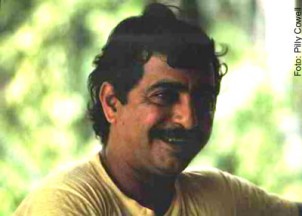
By Joan Martinez-Alier
One of EJOLT’s main tasks is to collect and map a large inventory (not less than 2000 cases) of environmental conflicts. Some will be success stories of forests saved, of dams or mining projects stopped. Many will be about ongoing struggles. And some will map killed environmentalists.
Many of us in the EJOLT project were in Rio de Janeiro in June 2012. The alternative “peoples’ summit” at the beach in Flamengo was entitled “For Social and Environmental Justice”. Words that do not even appear in the text produced by the official Rio+20 conference, also held in Rio de Janeiro. That is especially odd if you look at the history of the host country, Brazil. Since December 1988, when Chico Mendes was killed fighting deforestation in Acre (Brazil), hundreds of other socio-environmental activists have been killed in this country alone. And while we were in Rio, people fighting for the environment were killed from Peru to the Philippines. The civil society organization Global Witness published impressive figures on such victims, which went unmentioned in the bland agreement signed in Rio by governments (many of which are involved in such crimes).
After I came home from Rio, I read a book on Mexico by Luis Hernández Navarro, “Siembra de concreto, cosecha de ira”. In Mexico there are environmental justice networks such as REMA (against mining projects), MAPDER (against dams), “En Defensa del Maiz” (against transgenics and in defense of peasant agriculture). There is also the “Asamblea de Afectados Ambientales”. This crisply written book gives short accounts of many environmental conflicts emphasizing the successes of the poor and the indigenous. The author unavoidably mentions names of well-known environmentalists killed since 2007. The list could be multiplied by three by resorting merely to the regional newspaper editions or to the webpages of EJOs. In any given country, the number of activists who die is not directly related to the number of conflicts. It depends also on the general level of violence, which is higher in Mexico, Colombia and Peru than in Ecuador or Argentina. This being acknowledged, here are names gathered from Hernández Navarro’s book. Behind each name there was or there still is an environmental justice organization or a communal entity.
– Aldo Zamora, 15 May 2007, member of the tlahuica community fighting deforestation in San Juan Atzingo, killed by “talamontes” (large scale wood robbers) in the vicinity of Santa Lucía, Ocuilan, Mexico State.
– Aristeo Flores Rolón and Raul Delgado Benavides, 2007, in Cuautitlán de Barragán, Jalisco, for their defense of indigenous rights against iron mining in the ejido of Ayotitlán.
– Bernardo Méndez Vásquez and Bernardo Vásquez Sánchez, 18 January and 15 March 2012, Coordinadora de Pueblos Unidos del Valle de Ocotlán, in San José del Progreso, Oaxaca, for their opposition to the mining project La Trinidad of Fortuna Silver Mining.
– Betty Cariño, 27 Abril 2010, 37 years old, when traveling to San Juan Copala in solidarity with the triqui community. An activist in the Mixteca and elsewhere, a radio journalist, she had origins in Liberation Theology and was involved in conflicts against dams and for peasant agriculture.
– Leopoldo Juárez Urbina, 8 May 2010, and five or six other members of the purépecha community of Cherán, Michoacán, defending their communal forests against “talamontes”.
– Mariano Abarca, 27 November 2009, 50 years old, Chicomuselo, Chiapas, leader of the resistance to a barite mine owned by the Canadian company Backfire.
– Miguel Angel Pérez Cazales, 31 October 2009, from Santa Catalina, Tepotzlán, defending the protected area of Texcal against urbanization.
– Rubén Flores, 28 April 2010, his birthday, 42 years old, Coajumulco, Morelos, defending the forest of Ajusco Chihinautzin, killed by “talamontes”.
The list is endless and the trend does not look good. According to the global witness report, the death toll of campaigners involved in the protection of forests, rivers and land has almost doubled in three years. That brings the number of environmentalists killed to about one a week. The fight for environmental justice is a very dangerous one, but one that needs to be fought.
More info: http://www.guardian.co.uk/environment/2012/jun/19/environment-activist-deaths?intcmp=122

The project ENVJUSTICE has received funding from the European Research Council (ERC) under the European Union’s Horizon 2020 research and innovation programme (grant agreement No. 695446)